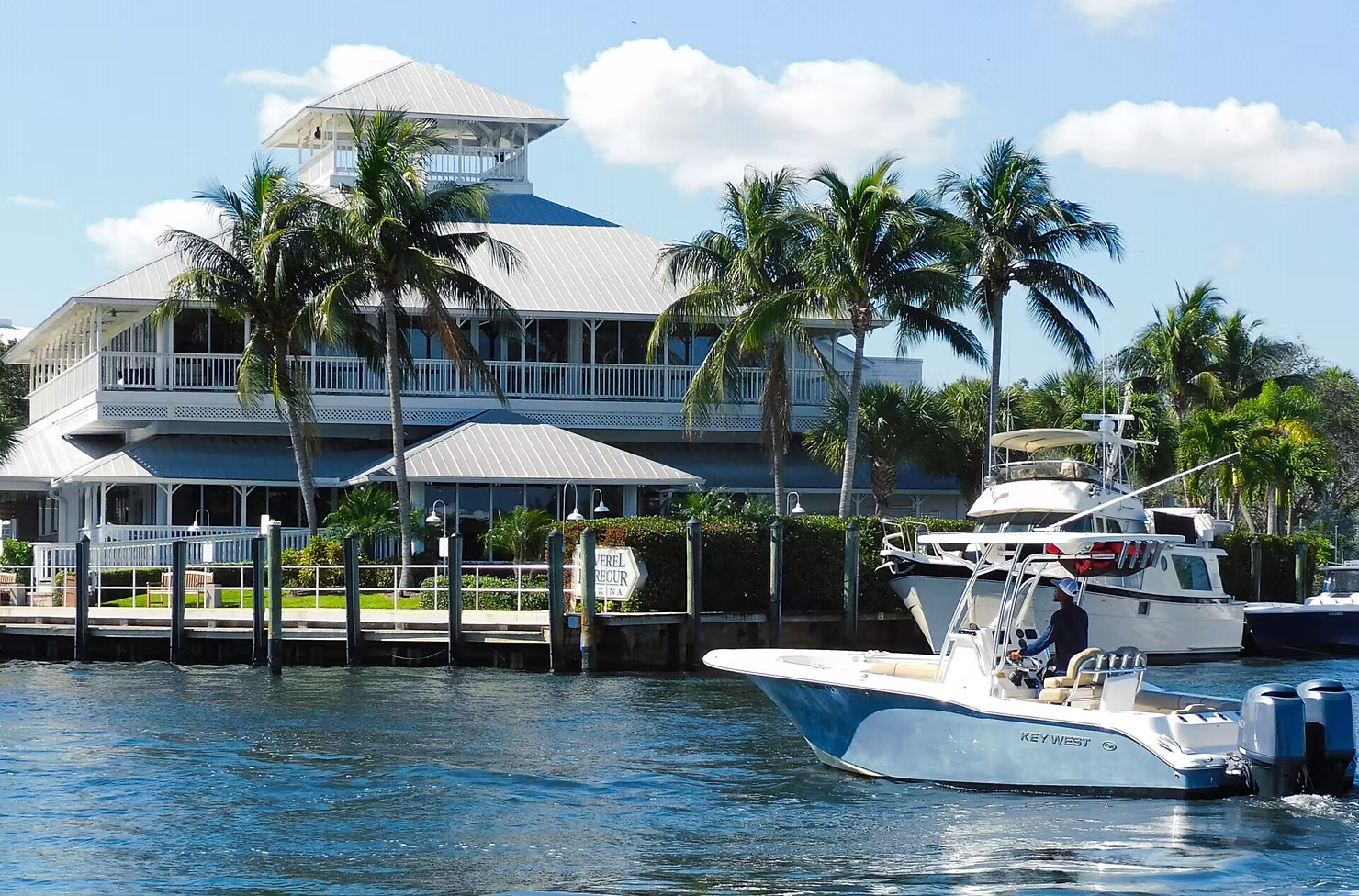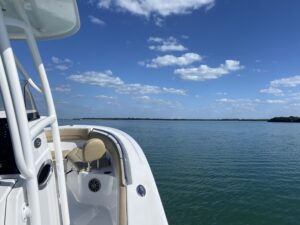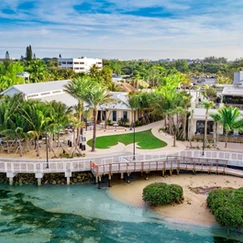
Hoping on a boat with friends, cruising to a local hotspot for top-notch dockside dining—few experiences rival that. Thanks to Gulfstream Boat Club’s prime locations nestled in the heart of familiar waterways, you can turn this daydream into a daily reality. Now, let’s brush up on our skills for a seamless docking experience. This guide keeps it simple and practical, honing in on the crucial steps to navigate waters and docking effortlessly. Whether you’re a seasoned captain or a novice enthusiast, mastering the art of docking promises to elevate your dockside dining adventures on any waterway.
Step 1: Preparation is Key
Know Your Boat: Understanding your boat’s dimensions, handling characteristics, and responsiveness is crucial. Different boats have varying turning radii and handling nuances, so spend time getting acquainted with your vessel. Our dockhands are available to answer any questions you have, so please don’t hesitate to ask!
Check the Weather: Before leaving the dock, take a moment to check the weather conditions. Wind and current can significantly impact docking maneuvers, so it’s essential to be aware of what you might encounter.
Step 2: Communicate Effectively
Assign Roles: If you have others aboard, assign specific roles when it comes to docking. One person can handle lines, another can communicate with the dock master or other boats, and someone can be at the helm.
Use Clear Signals: Establish a set of hand signals or communication methods to ensure everyone is on the same page. Clear communication is essential for a smooth docking operation.
Step 3: Execute the Approach
Reduce Speed in Advance: Begin slowing down well before reaching the dock. This not only gives you better control but also allows time for adjustments.
Choose Your Approach Angle: Depending on the conditions and available space, decide whether a parallel, perpendicular, or angled approach suits the dock. Consider wind, current, and the layout of the dock.
Monitor Wind and Current: Keep a close eye on the wind and current direction. Adjust your approach angle and speed accordingly to counteract these forces.
Controlled Speed is Key: Maintain a slow, controlled speed as you approach the dock. This gives you time to react and make adjustments if needed.
Step 4: Utilize Docking Techniques
The “Bow-In” Approach: For tight spaces or tricky winds, consider approaching the dock bow-first. This provides better control and visibility.
Approach at an Angle: As you approach the dock, come in at a slight angle. This allows for better control and visibility. Align the boat in a way that the bow is pointing toward the designated docking space.
Use Engine Power: Adjust the power of your engines to control the speed and direction of the boat. In a “Bow-In” approach, you may need to use more power to maintain control as you bring the bow closer to the dock.
Utilize Bow Thrusters (if available): If your boat is equipped with bow thrusters, now is the time to use them. Bow thrusters help to move the bow sideways, making it easier to position the boat precisely. This is especially valuable in confined spaces.
Coordinate with Wind and Current: Take into account the effects of wind and current on your boat. Adjust the angle and speed of your approach to counteract these forces. You might need to use bursts of power or turn the wheel strategically to maintain control.
Prepare to Secure Lines: As the bow nears the dock, have your crew ready to secure lines. Throw lines to dock attendants or secure them to cleats on the dock. Adjusting the lines appropriately will help bring the boat into its final docking position.
The “Stern-In” Approach: This technique is useful when dealing with strong currents. Back your boat into the slip, allowing the current to push the stern in.
Position the Boat: Before entering the docking area, position the boat parallel to the dock but slightly ahead of the intended slip or space. This provides a clear path for backing into the designated area.
Engage Reverse Gear: Shift the boat into reverse gear, using gentle power to begin the backward movement. Ensure that your crew is aware of the maneuver and ready to assist as needed.
Use Engine Power: Control the boat’s backward movement using the engine power. Adjust the throttle and steering to maintain a steady and controlled approach.
Watch for Wind and Current Effects: Be mindful of how wind and current affect the stern of the boat as you back in. Adjust the angle and power of the engines to counteract these forces, ensuring a controlled and precise docking.
Consider Bow Thrusters (if available): If your boat is equipped with bow thrusters, they can be used to fine-tune the positioning of the bow. This is especially helpful in situations where tight spaces or crosswinds may make it challenging to control the boat’s orientation.
Coordinate with Crew: Communicate effectively with your crew during the backing-in process. Have crew members ready to secure lines and adjust fenders as necessary to protect the boat during docking.
Secure Stern Lines: As the stern nears the dock, have your crew secure stern lines to dock cleats. Adjust the lines to bring the boat into its final mooring position. Ensure that lines are adequately tensioned to keep the boat securely docked.
Need some ideas for the best dockside dining in Palm Beach County? Check out our Member’s Favorite Guide!
Step 5: Secure Your Boat
Deploy Fenders: Before getting too close to the dock, deploy fenders on the side facing potential contact. This protects your boat from damage during docking.
Use Dock Lines Strategically: Have your crew ready to throw lines to dock attendants or secure them to cleats. Utilize spring lines for control, adjusting them as needed.
Step 6: Post-Docking Checks
Double-Check Security: Once docked, double-check that all lines are secure, and the boat is properly positioned.
Power Down Safely: Ensure your boat is in neutral, engines are off, and all systems are safely powered down.
Remember that Gulfstream Boat Club is more than just a provider of vessels; we’re your partners in nautical adventures. Our Member Services and dedicated dockhands are always at your disposal, ready to offer assistance and guidance whenever needed. If you find yourself craving additional support, consider taking advantage of our one-hour refresher course with a captain upon your return.
We believe that confidence on the water enhances the overall experience, allowing you to fully enjoy the stunning dockside dining options near our prime locations. Don’t miss this opportunity to refine your skills and navigate the waters with ease, opening up a world of endless possibilities for exploration and enjoyment. Fair winds and smooth docking!
#Docking #DockingTechniques #DocksideDining #HowtoDock #boatsafety #BoatingSafetyTips #BoatingSafetyTips #MemberTips #Dockside #BoatingTips


